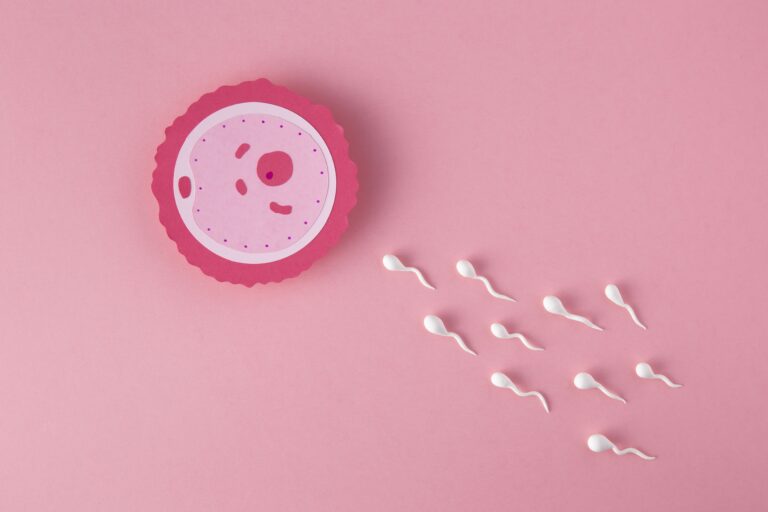Intrauterine Insemination
IVF or In-vitro Fertilization is an ART solution which is routinely used to help couples facing fertility issues


IUI Treatment in Gurgaon: A Comprehensive Guide to Parenthood
IUI or intrauterine insemination is a relatively simple procedure, in infertility treatment as compared to more complicated procedures like IVF. In IUI, the sperms are placed in the uterine cavity near to the opening of the fallopian tubes, closer to the time of ovulation so as to increase the chances of success of pregnancy. The goal of IUI is to increase the chances of pregnancy by bringing the sperm closer to the fallopian tubes, where the egg is usually fertilized.
If you're searching for IUI Treatment in Gurgaon, you're likely looking for the best fertility solutions to start or grow your family. Intrauterine Insemination (IUI) is a well-known fertility treatment that increases the chances of conception by placing sperm directly into the uterus. Dr. Sonu Balhara Ahlawat, a renowned fertility specialist in Gurgaon, offers personalized and advanced IUI treatment plans tailored to individual needs.
Definition:
Intrauterine insemination is a fertility treatment procedure that involves depositing the sperm directly into a woman's uterus during her ovulation period
Steps of IUI:
1. Ovulation Induction and follicular monitoring : when an IUI cycle is started, usually medicines or injections are given to the female partner for formation of one or two good follicles. The cycle is monitored by regular ultrasound, called follicular monitoring. The cycle can also be monitored by using ovulation predictor kits, as well as follicular monitoring to determine the timing of ovulation.
2. Sperm collection and preparation: The male partner provides semen sample, which is collected through masturbation at a particular time according to the injection given for ovulation. The semen sample is then processed in the laboratory to separate the motile and healthy sperm from the debris and seminal fluid. This process of separation of healthy motile sperms is known as sperm washing or sperm preparation.
3. Insemination – the prepared semen sample is loaded in a thin tube like catheter and it is inserted into the uterine cavity of the female through the cervix or mouth of uterus. This requires no anaesthesia and the female lies in a lithotomy position. The loaded semen is released into the uterine cavity.
4. Post procedure – the female is asked to lie in the similar position for a few minutes. There is no pain or discomfort in this procedure if done by an expert infertility specialist specifically trained in ART techniques. The lady can walk out of the clinic and resume all her routine activities.
Success rate - It's important to note that success rate of IUI can differ between different ART centres and clinics and also individual cases. The success rate varies depending on certain factors
- Age of the woman
- Cause of infertility
- Semen parameters
- Proper selection of the couple
Why choose IUI Treatment?
Unexplained infertility – in unexplained infertility where we cannot identify any cause of infertility after thorough testing, IUI may be recommended as a treatment option. It provides a more controlled environment for sperm to reach the egg compared to natural conception.
Donor sperm IUI – if the male has azoospermia (absence of sperms in the semen) pregnancy can be achieved using donor sperm. The sperm is carefully selected, processed, and then inseminated into the woman's uterus during her fertile period.
Mild male factor - If semen parameters are mildly deranged like, slightly lower sperm count, reduced sperm motility, or minor abnormalities in sperm shape (morphology), IUI can be helpful by concentrating the healthy sperms and delivering them directly into the uterine cavity, thus bypassing certain hindrances which come in the path of the sperms.
Sexual dysfunction – some couples may have difficulties during intercourse due to pain, erectile dysfunction, or some other issues. So IUI provides an alternative method of depositing sperms into the vagina or uterine cavity without relying solely on intercourse for achieving pregnancy.
Ovulation problems – if the female partner is not forming an egg (anovulation) or has irregular ovulation, IUI can be combined with ovulatory medications, such as oral or injectable, to stimulate the ovaries for egg formation and increase the chances of successful ovulation, fertilization, and pregnancy.
Cervical factor - In a few females, the cervix may produce hostile mucus, which can hinder the motility of the sperms or prevent the sperms from entering the uterus. IUI bypasses the cervix, placing the sperm directly into the uterine cavity, overcoming the hostile mucus.
IUI is recommended for couples facing infertility due to mild male factor infertility, cervical mucus problems, or unexplained infertility. The procedure is less invasive and more affordable compared to other assisted reproductive technologies like IVF, making it a popular first step in fertility treatments.
IUI Cost in Gurgaon
The IUI Cost in Gurgaon varies depending on the clinic, medications, and the number of cycles required. At our clinic, we strive to offer affordable fertility care without compromising on quality. The average cost of IUI treatment in Gurgaon ranges from ₹10,000 to ₹25,000 per cycle, including consultations, monitoring, and the procedure itself. Our team is committed to making fertility treatments accessible to everyone, and we provide transparent pricing with no hidden charges.
Top Intrauterine Insemination Doctors in Gurgaon
Our clinic, led by Dr. Sonu Balhara Ahlawat, features some of the best Intrauterine Insemination Doctors in Gurgaon. With over 25 years of experience in fertility treatments, Dr. Balhara and her team use evidence-based methods to ensure the highest chances of success. Our doctors offer compassionate care, guiding you through each step of your fertility journey with personalized attention and expert advice.
Best IUI Centre and Hospital in Gurgaon
Is IUI for me?
To determine whether IUI is meant for you or not depends on many factors that should be assessed by a fertility specialist. It can be recommended only after thorough evaluation of your medical history, certain tests, and only after that a fertility specialist can provide personalized treatment and will be able to determine if IUI is a suitable treatment option for you or if any other intervention may be more appropriate.
When it comes to finding the Best IUI Centre in Gurgaon, look no further. Our fertility center is equipped with state-of-the-art technology and follows the latest international protocols to provide top-notch fertility care. Our success rates speak for themselves, making us the go-to choice for couples seeking IUI in Gurgaon.
Why Choose Us?
- Advanced fertility treatments including IUI, IVF, and ICSI
- Highly experienced and compassionate team led by Dr. Sonu Balhara Ahlawat
- Affordable pricing and transparent cost breakdowns
- Individualized treatment plans based on each patient’s unique fertility needs
- A warm, supportive environment that prioritizes patient comfort and satisfaction
As the Best IUI Hospital in Gurgaon, we prioritize your well-being and make sure you receive the highest quality care from start to finish.
Why Choose Dr. Sonu Balhara Ahlawat for Your IUI and ICSI Treatment?
Dr. Sonu Balhara Ahlawat is one of the leading fertility specialists in Gurgaon, with over 25 years of experience in reproductive medicine. Her expertise in IUI, ICSI, and IVF treatments has helped numerous couples achieve their dream of parenthood. With a deep commitment to patient care, Dr. Balhara offers a holistic approach to fertility treatments, combining the latest scientific advancements with compassionate care.
Schedule Your Consultation Today
Whether you're considering IUI or ICSI Treatment in Gurgaon, our clinic is here to help. Schedule a consultation with Dr. Sonu Balhara Ahlawat to discuss your fertility options and start your journey toward parenthood. We are proud to be recognized as one of the Best IUI Centres and ICSI Hospitals in Gurgaon, and we look forward to supporting you every step of the way.
More Services
How can we help you?
Contact us at the Consulting WP office nearest to you or submit a business inquiry online.


